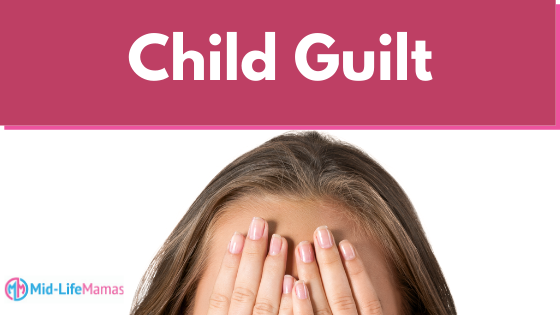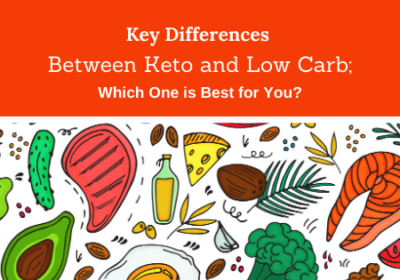POST UPDATED 6/2/20
Child guilt sound like a bad idea? Maybe, but read further and you’ll actually see that sometimes it’s good to use child guilt when parenting. It may actually help you raise grateful, thankful and appreciate kids.
PROVEN STRATEGIES FOR GAINING MORE ENERGY THROUGHOUT THE DAY

What’s Wrong With a Little Mama Guilt?
I grew up in a semi-Jewish family so I am very familiar with the guilt supposedly given to children from Jewish Mothers. While never experiencing it myself (at least not consciously), it’s mainly a stereotypical Jewish mothering tactic.
If you’re not familiar with the stereo typical “Jewish mother” check out the television show The Goldbergs to get a better idea.
I never gave child guilt any real thought until just recently when I was trying to get my son ready to go to reading “camp” and he refused to go. His excuse was that it’s not fair because his brother doesn’t have to go. This was true but his brother didn’t need supplemental reading lessons.
PROVEN STRATEGIES FOR GAINING MORE ENERGY THROUGHOUT THE DAY
The Superhero Mama Tool Belt.
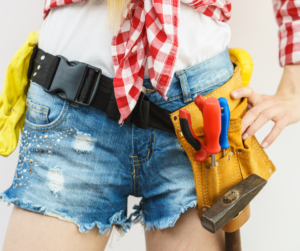
Using certain types of guilt is another tool in the Superhero Mama Tool Belt.
First I tried empathizing with my son about going to reading camp, explaining that life isn’t fair. I then resorted to threatening to take away his Kindle, his prized possession. I hate using consequences like this, but sometimes it’s my last resort.
PROVEN STRATEGIES FOR GAINING MORE ENERGY THROUGHOUT THE DAY
However, nothing worked and I gave up. I had given it my best shot, short of carrying him to the car, strapping him in and driving to class (which we fondly refer to as “camp”). So what did I do? I gave up.
Fifteen minutes later after he had shut himself in my room, he came out and said O.K. Mommy I’ll go. In my head I had already moved on so my first response was nope, it’s too late. Then I looked at the clock and figured we could still make it if we left in the next five minutes.
What had changed? I didn’t know at the time but my husband talked to him just before we left. What did he say to change his mind? He told my son that Mommy would be very “disappointed” in him if he didn’t go. Mama guilt courtesy of Daddy.
PROVEN STRATEGIES FOR GAINING MORE ENERGY THROUGHOUT THE DAY
What is Child Guilt?
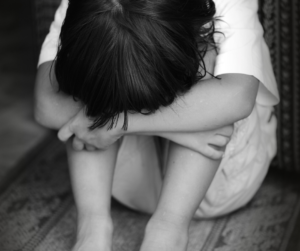
We’re all familiar with what guilt is in general and it’s really the same thing no matter who you are. Child guilt is when children feel guilty about doing something or not doing something.
Any type of guilt is not a good feeling, but it can be used to guide them in the right moral direction.
Should child guilt be used as a parenting technique?
PROVEN STRATEGIES FOR GAINING MORE ENERGY THROUGHOUT THE DAY
Child Guilt, Good or Bad Parenting Technique?
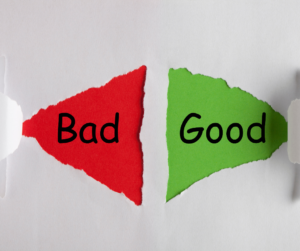
According to parenting experts out there, it depends, on what type of guilt you’re using. Experts say guilt is a healthy part of child development.
If our children are not experiencing guilt for their actions like when harming others, they need additional guidance from their parents or a professional.
All guilt is not created equal. You should give serious thought before using any kind of child guilt.
Here are five different child guilt techniques you may (or may not) want to include in your parenting “tool kit.”
PROVEN STRATEGIES FOR GAINING MORE ENERGY THROUGHOUT THE DAY
Five Different Types of Child Guilt.
1. Shame Guilt
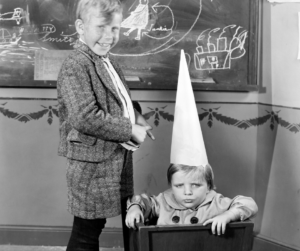
I think most people will agree that shaming your child is not an effective parenting tool. Shaming can cause way more damage than it can help with negative behaviors.
What some parents might not know is that there are different types of shame. Not just the obvious ones like belittling a child through a harsh statement.
In my “reading camp” situation I could have said (not that I would) “you have to go, because you are not as good as the other kids in your class and you need to get better.”
This is obviously not a healthy way to use shame.
But according to research psychologist Peggy Drexler, Ph.D there are also other understated ways that parents shame their children unknowingly.
Some parents may unintentionally shame their children by making them feel inadequate through non verbal physical actions. Have you ever rolled your eyes or even sighed in response to something he or she’s done? This may be interpreted by your child as a type of shame.
Drexler explains that shaming can also be destructive. This is because most kids can’t distinguish between their impulses and their actions.
“Instead of condemning the behavior, shaming ends up condemning the child, and making him feel bad about himself.” A good example is telling a child that he’s a bad boy, when it’s the behavior of the child that’s bad, not the child himself.
PROVEN STRATEGIES FOR GAINING MORE ENERGY THROUGHOUT THE DAY
2. Empathy Guilt
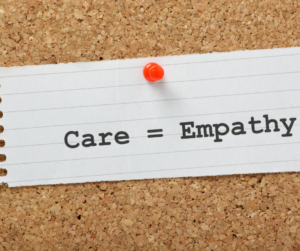
Empathy guilt is what I used in my “reading camp” example. I tried to show my son that I understand how he feels and that I can see things from his perspective. It didn’t work for me that time.
But it did work for my husband when he helped our son empathize with my feelings about him refusing to go to “reading camp.”
You want them to naturally feel the guilt by explaining how their actions impact other’s feelings. Not forcing them into feelings of guilt.
That said, it’s not really about pushing a child into guilt — the idea is not to tell a kid they should feel bad about themselves. That’s not the point.
The idea is that the parent should lead the child to help him understand what they’ve done wrong so they naturally feel the guilt. This can be done by asking them to think about how their actions made another person feel.
PROVEN STRATEGIES FOR GAINING MORE ENERGY THROUGHOUT THE DAY
3. Moral Guilt
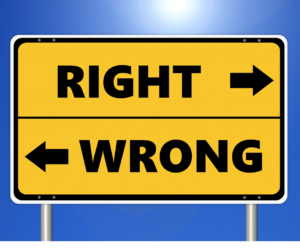
One our very first goals as parents is to teach our children right from wrong. To instill within them a set of standards of behavior or beliefs regarding what’s right and what’s unacceptable.
In our house it started off something like this, “It’s not right to hit your brother, don’t chew on the furniture, don’t poop in the backyard.” yup I said “don’t poop in the backyard.”
According to Tina Malti, a professor of psychology at the University of Toronto who has studied the development of guilt in children says “moral guilt is healthy and good to develop. It helps children to refrain from aggression and other anti-social behavior.”
Dr. Michele Borba, author of Unselfie: Why Empathetic Kids Succeed in Our All-About Me World says to use the virtue of the behavior. Essentially call out why the behavior was unkind or dishonest. Connect it to the values you’re trying to teach.
Using this technique will help your child to start understanding how their behavior is connected to their morality and character.
PROVEN STRATEGIES FOR GAINING MORE ENERGY THROUGHOUT THE DAY
4. Social Guilt
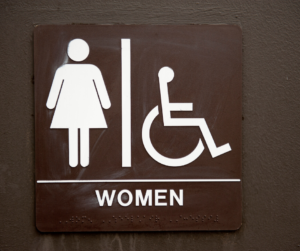
Social guilt is very similar to moral guilt but applies to morals and society. Another one of our goals as parents is to teach our children right from wrong within the social confines of our families and our world.
As their social conscious expands from our family into the world, we teach them social rights and wrongs.
I’ve passed on many social “guilts” to my children. Telling my kids that it’s not right to use the handicapped bathroom is one of them. I tell them that even if there’s no one in there at that moment, someone may come in when they’re using it.
I explain that someone may come in a wheelchair and they won’t be able to go to the bathroom because the chair won’t fit. How would they feel if the roles were reversed and they were the one in the wheelchair?
PROVEN STRATEGIES FOR GAINING MORE ENERGY THROUGHOUT THE DAY
5. Guilt Tripping
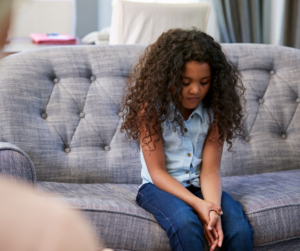
I think of guilt tripping as synonymous with hindsight guilt. This is another type of child guilt that my husband used on my son.
By saying to him that if he doesn’t go to reading camp now, then later he’ll feel guilty because his mother (me) will be upset (his words not mine).
Guilt Tripping can be effective if it benefits the receiver (child). If it benefits the giver (parent) as well then of course it’s a win win.
If it’s used to get the child to do something that will benefit him such as improving his reading then there’s nothing the matter with a little Mama guilt, or in this case Daddy guilt.
PROVEN STRATEGIES FOR GAINING MORE ENERGY THROUGHOUT THE DAY
To Guilt or Not To Guilt?
That’s a really good question. Shame, empathy, moral, social and guilt tripping are some of forms of guilt you may or may not want to add to your Superhero Mama Tool Belt.

We can all more than likely agree not to play the “shame game” with our children. This can be cruel and can leave lasting psychological “scars.” Nothing’s worth that.
But what about using any of the other four types of guilt?
PROVEN STRATEGIES FOR GAINING MORE ENERGY THROUGHOUT THE DAY
You shouldn’t use any type of guilt if it’s based on things that are beyond your child’s control such as a divorce or a disability.
You should give a lot of thought before using any kind of guilt with your children. Will it help them to be a kind, caring productive member of society? Then you might want to try it.
Guilt (excluding shame) may be beneficial if it results in teaching children to naturally feel it. They need to understand how their actions impact others on their own, not by us forcing our feelings on them.
If you decide to use guilt ALWAYS make sure that they know it’s the action you’re referring to and not the child.
PROVEN STRATEGIES FOR GAINING MORE ENERGY THROUGHOUT THE DAY

RESOURCES:
Expert says guilt is a healthy part of child development

